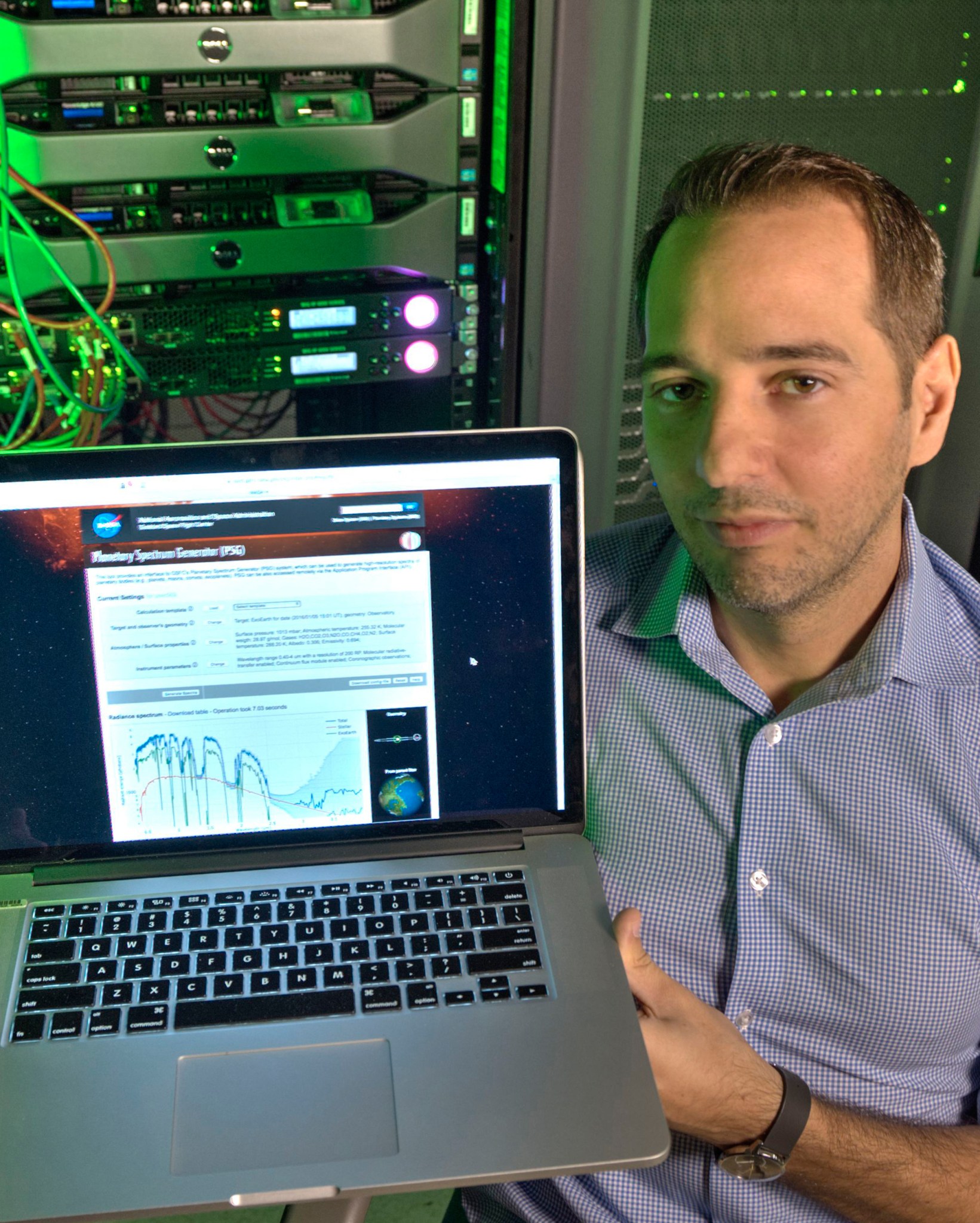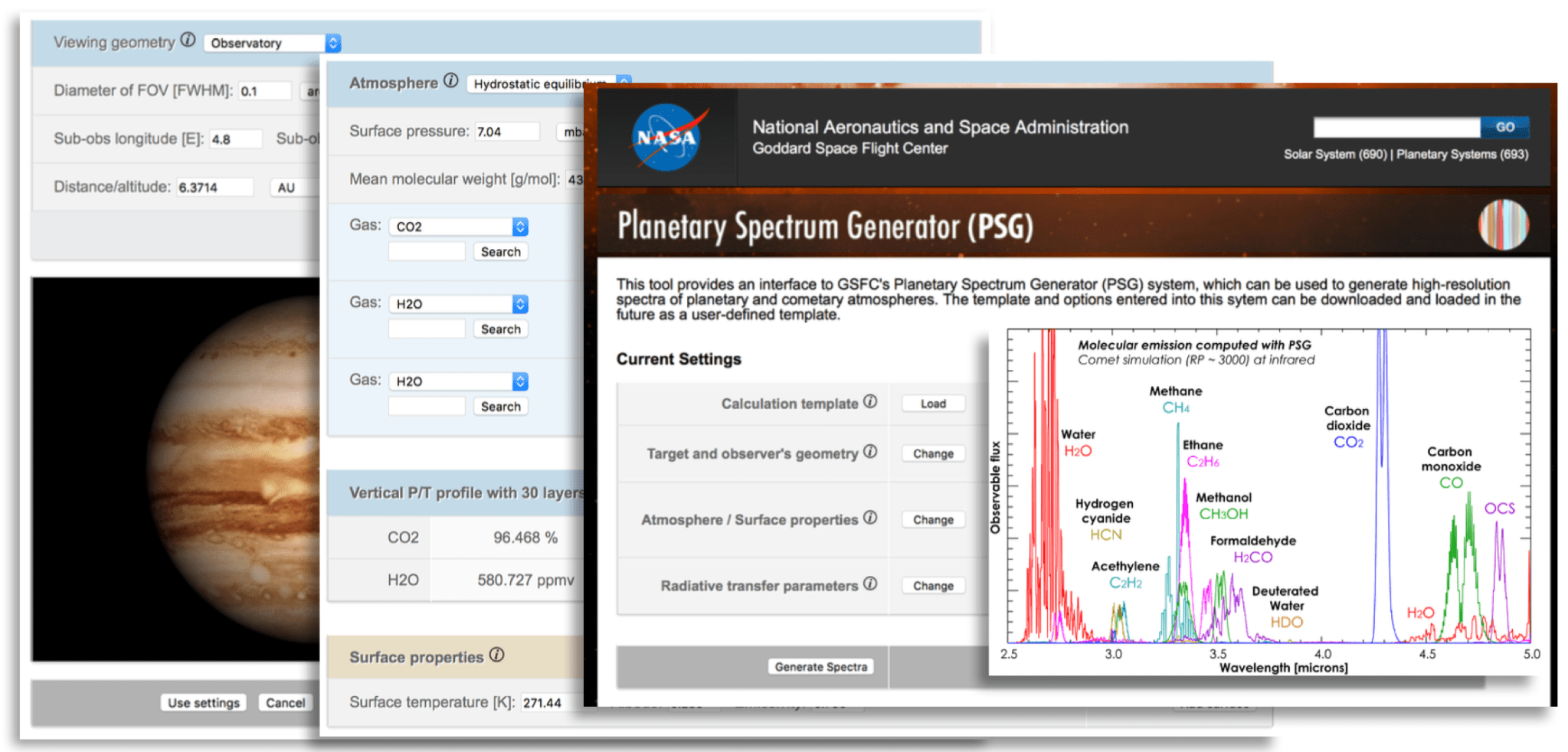
Hundreds of scientists worldwide currently use an online application that accesses at least one terabyte of data to calculate everything from the spectrum of an exoplanet and the weather on Mars to the chemical makeup and orbit of a celestial object. It’s now expected to get even better.
A team of NASA scientists plan at the Goddard Space Flight Center in Greenbelt, Maryland, is further enhancing the Planetary Spectrum Generator, or PSG, which has attracted hundreds of expert and non-expert users worldwide, mainly through word-of-mouth advertising, since going online just a year ago.
Top on the team’s list is incorporating additional databases that catalogue detector characteristics of current and future ground- and space-based instruments, said Principal Investigator Geronimo Villanueva, a Goddard planetary scientist who is leading the effort.
With the enhancement, scientists will be able to use the tool to predict what an instrument might detect when observing a rocky planet, gas giant, comet, or even one of the thousands of exoplanets already identified by NASA’s Kepler Space Telescope — insights scientists value when reserving observation time on any telescope. It likewise will help them conceive and plan future missions, including the type of instruments they would have to fly to gather a certain type of measurement.
“No tool out there does what it can do,” said Villanueva, who conceived the application mainly out of frustration. “I remember trying to find out how many photons (light particles) I could collect from Mars. I thought everyone should know that, but I ended up spending a lot of time trying to get the right numbers.”
He thought, why not create an online tool that stores validated data on a server and then allows users to access and manipulate the measurements using embedded, behind-the-scenes computer algorithms and a user-friendly Web-based interface that’s accessible on any computing device, including tablets and smart phones? “Basically, I collected knowledge and put it here,” Villanueva said.
Initially, PSG allowed users to synthesize spectra — the analysis of light — of planets, comets, asteroids, moons, and thousands of exoplanets over a broad range of wavelengths. The data came from several observatories, orbiters, and landers.
The original tool also included a 3-D orbital calculator as well as programs that simulated non-data instrument “noise” and coronagraphs — devices that block starlight to reveal orbiting objects. Users also could access profiles of temperature and chemical abundances for Venus, Earth, Mars, Titan, Neptune, and other smaller bodies, just to name a few features.
PSG proved to be a “great asset” and relatively easy to use, as evidenced by the number of non-technical users who access the online tool, Villanueva said. Since its debut, scientists have used the tool to develop Mars mission concepts, plan James Webb Space Telescope observations, and define scientific and technical requirements for a proposed follow-on to the Webb Observatory, he added.
Despite its success, Villanueva and his team believed it could be improved.
“The foundational elements are there, but the tool didn’t include performance data for detectors or sensors,” he said, adding that he and his team plan to incorporate detector characteristics for eight assets, including the Webb Observatory, Hubble Space Telescope, New Horizons, Cassini, ExoMars, the NASA Infrared Telescope Facility, and the Stratospheric Observatory for Infrared Astronomy.

With these performance specifications, coupled with the tool’s already-existing databases, scientists will be able to define which missions to fly and develop accurate and precise models of how instruments would be expected to perform.
“Once you know how to model the performance of different technologies, you can accurately design a wide range of future instruments,” Villanueva said. “It could tell you, for example, if you needed a bigger mirror or a better detector. In the end, these developments will reduce costs, time, and resources when designing future instruments and missions.”
For more technology news, go to https://gsfctechnology.gsfc.nasa.gov/newsletter/Current.pdf
By Lori Keesey
NASA’s Goddard Space Flight Center


























